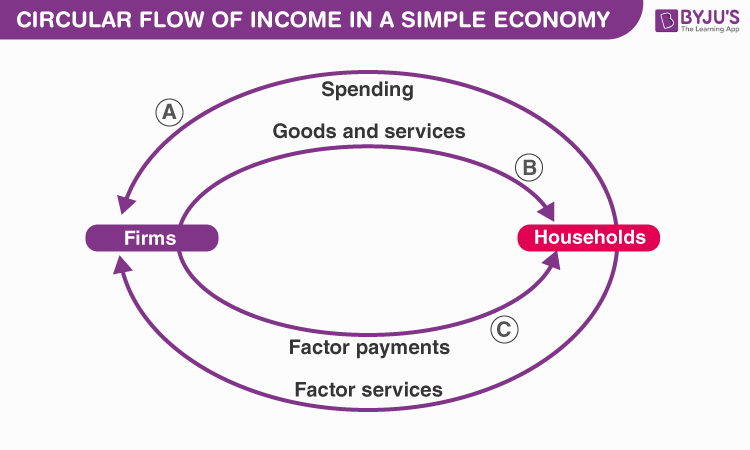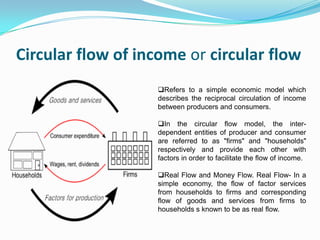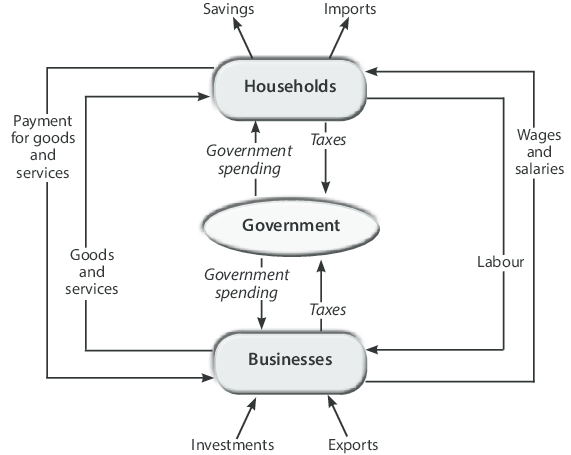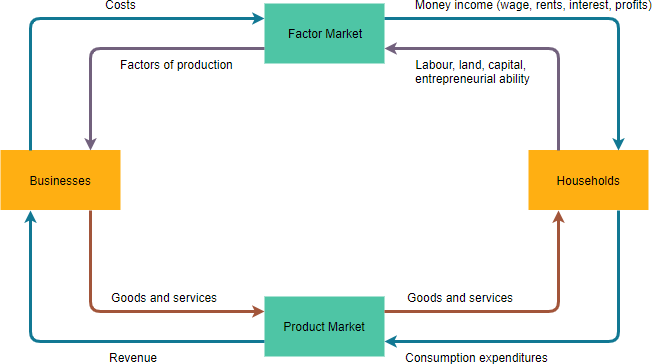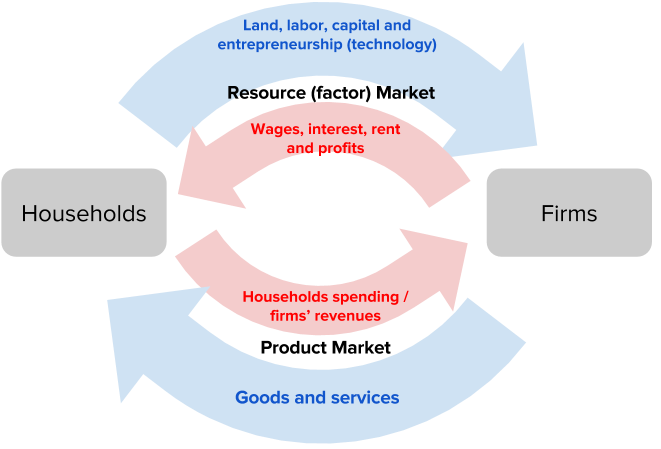The circular flow of economy is a model that represents the movement of goods, services, and money between producers and consumers in an economy. It is a visual representation of the way that economic activity occurs, and it helps to explain how different sectors of the economy are interconnected.
In the circular flow model, there are two main groups of economic actors: households and firms. Households are the consumers in the economy, and they earn income by selling their labor or other resources to firms. Firms, on the other hand, are the producers in the economy, and they use the resources and labor provided by households to produce goods and services that are sold to households and other firms.
The circular flow of economy can be divided into two main parts: the real economy and the financial economy. The real economy is the part of the economy where goods and services are produced and consumed, and it is characterized by the flow of goods, services, and resources between households and firms. The financial economy is the part of the economy where money is exchanged, and it is characterized by the flow of money between households and firms.
In the real economy, households provide firms with the resources and labor needed to produce goods and services. In return, firms pay households for their resources and labor, and this payment is known as income. Households then use their income to purchase goods and services from firms, and this creates demand for the goods and services that firms produce.
In the financial economy, firms use the money they receive from selling goods and services to pay for the resources and labor that they need to produce more goods and services. Households, on the other hand, use their income to purchase financial assets, such as stocks and bonds, which provide a return on investment in the form of dividends or interest.
Overall, the circular flow of economy is a continuous process in which households and firms interact to produce and consume goods and services, and in which money flows between them to facilitate the exchange of these goods and services. It is a key concept in economics that helps to explain how different parts of the economy are connected and how economic activity occurs.
